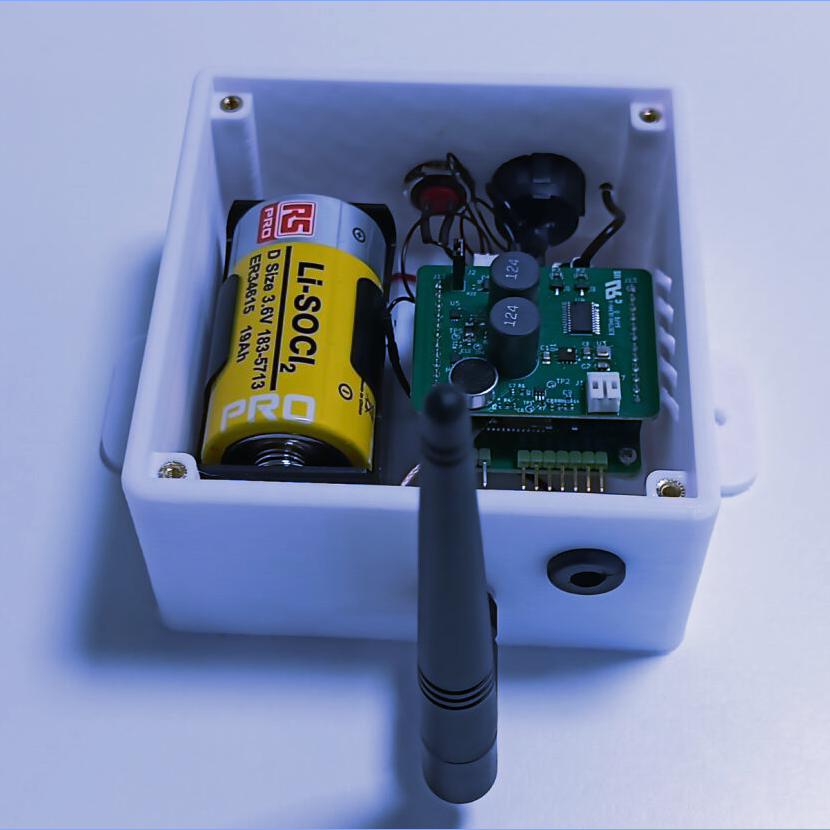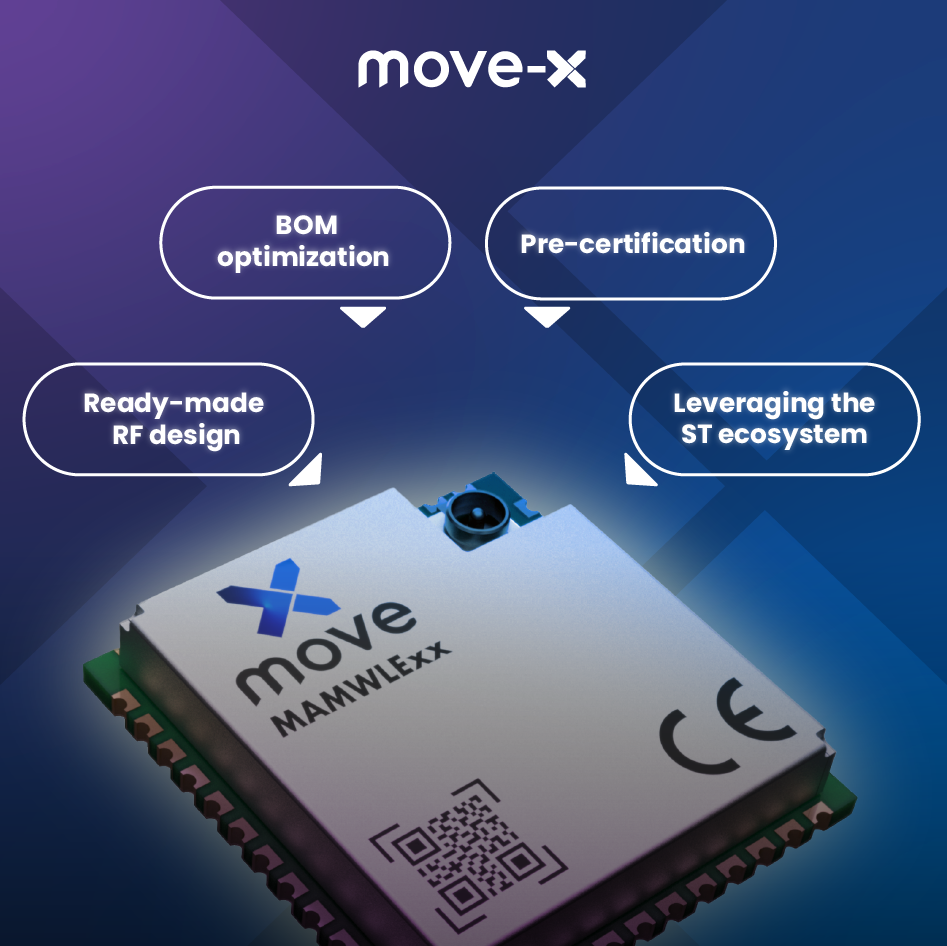Building Health Monitoring with LoRaWAN
In the fast-evolving world of IoT, companies like AXTRID are leading the way in creating innovative solutions to address pressing challenges.
This case study showcases how AXTRID successfully implemented Move-X’s LoRaWAN module (MAMWLE) to develop a wireless sensor system for monitoring the health of a building. The project demonstrated the power of LoRaWAN technology in providing reliable and efficient wireless communication solution for embedded systems.
Objectives
AXTRID, a French company based in Guyancourt, aimed to create a comprehensive solution to monitor various aspects of building health, such as fire detection, air quality, and water leak detection in parking areas. The primary objective was to develop a wireless system, with at least 3 years of battery autonomy, capable of alerting managers or CEOs to potential issues even when nobody is present in the building.
They required a microcontroller that offered low power consumption, abundant peripherals, and integrated LoRa stack and RF capabilities to optimize the PCB footprint and reduce costs. Initially, they utilized some competitors’ products, but encountered challenges such as high-power consumption during idle mode and transmission, and limited pin count. Considering these factors and the advantage of not needing to worry about RF design, the MAMWLE emerged as the clear winner for the project.

- System Components and Interfaces
To achieve the desired functionality, AXTRID integrated several external components with Move-X’s MAMWLE module. These components included a flash memory (16MB), BME680 sensor for air quality monitoring, SCT31 for CO2, and a microphone along with an analog circuit to detect fire alarm buzzers. The MAMWLE module served as the primary application microcontroller for the product.
- Communication Protocol
The chosen communication protocol for this project was LoRaWAN. LoRaWAN’s long-range capabilities and low-power consumption made it a perfect fit for AXTRID’s wireless monitoring system, covering the extensive surface area of the building. The MAMWLE microcontroller, employed for the primary application, seamlessly integrates a fully configurable LoRa radio, tailored to meet the specific requirements.

- Firmware Development
AXTRID utilized the STM32CubeIDE as the firmware development tool, leveraging its robust features and capabilities. Additionally, the team utilized the NRF Power Tool to optimize power consumption, ensuring extended battery life for the sensor system.
- Power Supply and Dimensions
To meet the requirement of at least 3 years of battery autonomy, AXTRID utilized a Battery Li-SOCI2 19Ah power supply. The compact dimensions of the final product were achieved with a PCB size of 44 mm and a case size of 10.5 x 9.5cm, ensuring seamless integration into the building infrastructure.

- Principle of the Mother Board
In order to address the endless IoT use cases in buildings, AXTRID adopted a unified approach. They designed a main board that housed the MAMWLE microcontroller, a buck converter, flash memory for future firmware updates over the air (FUOTA), and a generous number of I/O ports. This standardized design approach enables rapid production scalability, as the base electronics remain consistent and thoroughly tested when accommodating new use cases.
- Principle of the Daughter Board
The daughter board was specifically designed to accommodate the required sensors for the overall use case. AXTRID implemented MOSFETs to regulate power supply to the sensors during sleep mode, effectively reducing power consumption. For the initial use case of monitoring water levels in the parking area, a flotation sensor was selected. Positioned inside a designated hole, it triggers the main MCU if the water level exceeds a specified threshold. Additionally, the system needed to detect potential fire hazards during non-working hours, considering the presence of 3D printers, soldering irons, and other tools. To address this, AXTRID incorporated a microphone and an analog circuit to detect certified smoke alarms, allowing alerts to be sent to the CEO when necessary. Another solution involved combining the BME680 sensor and STC31 to monitor air quality and detect pollutants that may indicate the presence of a fire.

Conclusion
By leveraging the MAMWLE module from Move-X and implementing these innovative design principles, AXTRID successfully developed a comprehensive building health monitoring system, exemplifying the capabilities and reliability of LoRaWAN technology in IoT applications. Move-X’s MAMWLE module proved to be a crucial component in enabling seamless communication, efficient data collection, and extended battery life.
Contact us!
Would you like advice about your IoT project?
Talk to our experts.
Working hours
Monday to Friday:
9:30 am to 18:30 pm (CET)
Contact Phone
+39 3426486115
Email
info@move-x.it









